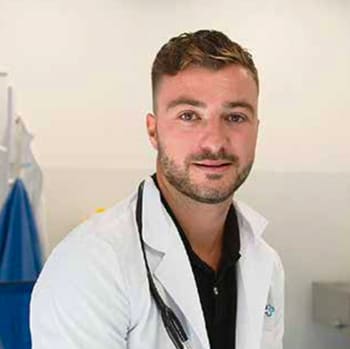
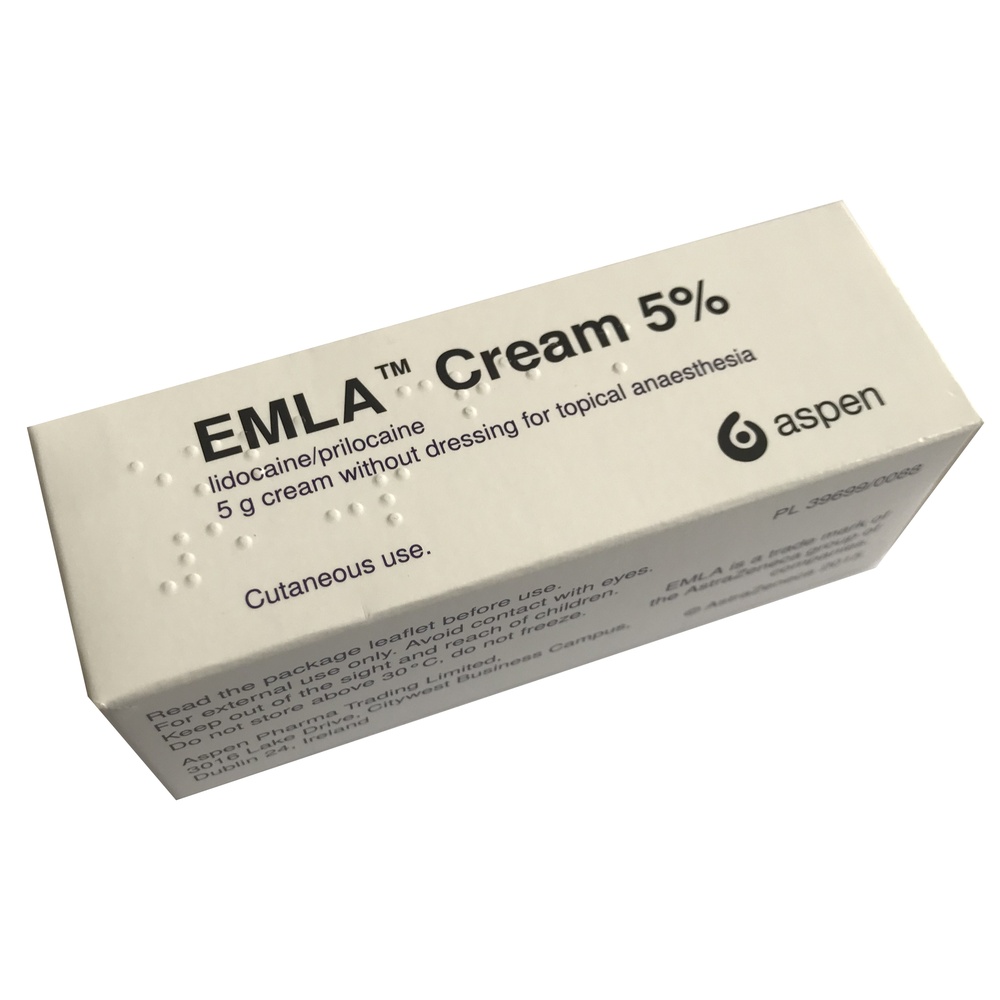
Emla

Ask a doctor about a prescription for Emla

How to use Emla
Leaflet accompanying the packaging: information for the user
Warning! The leaflet should be kept. Information on the immediate packaging in a foreign language.
EMLA
25 mg/g + 25 mg/g, cream
Lidocaine + Prilocaine
You should carefully read the contents of the leaflet before using the medicine, as it contains important information for the patient.
- You should keep this leaflet, so that you can read it again if you need to.
- If you have any further questions, ask your doctor or pharmacist.
- This medicine has been prescribed for you only. Do not pass it on to others. It may harm them, even if their symptoms are the same as yours.
- If you experience any side effects, including any not listed in this leaflet, please tell your doctor, pharmacist, or nurse. See section 4.
Table of contents of the leaflet
- 1. What is EMLA and what is it used for
- 2. Important information before using EMLA
- 3. How to use EMLA
- 4. Possible side effects
- 5. How to store EMLA
- 6. Contents of the packaging and other information
1. What is EMLA and what is it used for
EMLA contains two active substances, lidocaine and prilocaine. They belong to a group of medicines called local anesthetics.
The action of EMLA is to temporarily numb the sensation in the outer layers of the skin. The cream is applied to the skin before certain medical procedures and treatments.
This helps to relieve pain in the skin; however, the patient may still feel pressure and touch.
Adults, adolescents, and children
EMLA can be used to numb the skin before:
- insertion of a needle into the skin (for example, when giving an injection or taking a blood sample),
- minor surgical procedures on the skin.
Adults and adolescents
EMLA can also be used:
- to numb the genital area before injection or minor surgical procedures such as removal of warts. The application of EMLA to the genital area should be performed under the supervision of a doctor or nurse.
Adults
EMLA can also be used to numb the skin before:
a procedure to clean or remove damaged skin on leg ulcers.
2. Important information before using EMLA
When not to use EMLA:
- if the patient is hypersensitive to lidocaine, prilocaine, or any other local anesthetic or to any of the other ingredients of this medicine (listed in section 6).
Warnings and precautions
Before starting to use EMLA, you should discuss this with your doctor or pharmacist:
- if the patient has a rare metabolic disorder that affects the blood, known as glucose-6-phosphate dehydrogenase deficiency,
- if the patient has a problem with the level of a pigment in the blood called methemoglobinemia,
- EMLA should not be applied to areas of skin with eczema, cuts, scrapes, or other open wounds, except for leg ulcers. If the patient has any of these conditions, they should consult their doctor or pharmacist before using the cream,
- if the patient has a skin disorder with itching called atopic dermatitis, it may be sufficient to use the cream for a shorter time. The use of the cream for more than 30 minutes is associated with a higher risk of local skin reaction (see also section 4 "Possible side effects"),
- if the patient is taking certain medicines used to treat irregular heart rhythms (anti-arrhythmic medicines of class III, such as amiodarone). In this case, the doctor will monitor the patient's heart activity.
Due to the possibility of increased absorption from freshly shaved skin, it is essential to follow the recommended dosage, area of application, and duration of application on the skin.
EMLA should be kept away from the eyes, as it may cause irritation.
If EMLA accidentally gets into the eye, it should be rinsed immediately with lukewarm water or a saline solution (0.9% NaCl solution). Caution should be exercised to avoid getting anything into the eye until sensation returns.
EMLA should not be applied to broken skin or to the middle ear.
Children and adolescents
In infants and newborns under 3 months of age, a transient, clinically insignificant increase in methemoglobin levels in the blood is commonly observed within 12 hours of application of EMLA.
The efficacy of EMLA for blood sampling from the heel in newborns or for providing adequate pain relief during circumcision has not been confirmed in clinical trials.
EMLA should not be applied to the mucous membranes of the genital area (e.g., vagina) in children (under 12 years of age) due to insufficient data on the absorption of the active substances.
EMLA should not be used in children under 12 months of age who are being treated with other medicines that may cause methemoglobinemia (e.g., sulfonamides; see also section 2 "EMLA and other medicines").
EMLA should not be used in premature newborns.
EMLA and other medicines
You should inform your doctor or pharmacist about any other medicines you are taking or have recently taken, including those that can be bought without a prescription and herbal medicines. This is because the ingredients of EMLA may affect the action of other medicines, and some other medicines may affect the action of EMLA.
In particular, the patient should inform their doctor or pharmacist if they have used or are using any of the following medicines:
- Medicines used to treat infections, known as sulfonamides, and nitrofurantoin.
- Medicines used to treat epilepsy: phenytoin and phenobarbital.
- Other local anesthetics.
- Medicines used to treat irregular heart rhythms, such as amiodarone.
- Cimetidine or beta-blockers, which may increase the level of lidocaine in the blood. This interaction is not clinically significant in short-term use of EMLA in recommended doses.
Pregnancy, breastfeeding, and fertility
If you are pregnant or breastfeeding, think you may be pregnant, or are planning to have a baby, ask your doctor or pharmacist for advice before using this medicine.
Occasional use of EMLA during pregnancy is not associated with any increased risk of side effects in the fetus.
The active substances of EMLA (lidocaine and prilocaine) are excreted into breast milk. However, the amount that enters the milk is so small that there is no significant risk to the baby who is being breastfed.
In animal studies, no effects on fertility were observed in males or females treated with the active substances of EMLA.
Driving and using machines
EMLA has no or negligible influence on the ability to drive and use machines when used as recommended.
EMLA contains macrogolglycerol hydroxystearate
Macrogolglycerol hydroxystearate may cause skin reactions.
3. How to use EMLA
EMLA should always be used exactly as your doctor, pharmacist, or nurse has told you.
If you are not sure, ask your doctor, pharmacist, or nurse.
Using EMLA
- The area of application, amount of cream, and duration of application depend on the intended use.
- Your doctor, pharmacist, or nurse will apply the cream to the appropriate area or show you how to do it yourself.
- When EMLA is used on the genital area, the doctor or nurse should supervise its use.
EMLA should not be applied to the following areas:
- Cuts, scrapes, or open wounds, except for leg ulcers.
- Areas of skin with eczema or dermatitis.
- Eyes or the area around the eyes.
- Inside the nose, ears, or mouth.
- Rectum.
- Genital area in children.
People who frequently apply or remove the cream from the patient's body should ensure that they avoid contact with the cream to prevent the development of hypersensitivity.
The protective membrane of the tube is pierced with the tube cap.
Application to the skin before minor procedures (such as needle insertion or minor surgical procedures on the skin):
- A thick layer of cream is applied to the skin. The doctor, pharmacist, or nurse will tell you where to apply the cream.
- The layer of cream is then covered with a dressing (plastic foil). The dressing is removed immediately before the procedure starts. If the patient applies the cream themselves, they should ensure that they have received dressings from their doctor, pharmacist, or nurse.
- The usual dose for adults and adolescents over 12 years is 2 g (grams).
- For adults and adolescents over 12 years, the cream should be applied at least 60 minutes before the planned time of the procedure (except when the cream is applied to the genital area). However, the cream should not be applied more than 5 hours before the procedure or earlier.
- For children, the amount of EMLA and the duration of application depend on the child's age. The doctor, nurse, or pharmacist will inform the patient about the amount of cream to be used and when to apply it.
When applying EMLA, it is essential to follow the instructions carefully:
- 1. Squeeze out a portion of cream from the tube to form a mound in the area where it is needed on the skin (e.g., where the needle is to be inserted). A 3.5 cm line of cream from a 30 g tube corresponds to 1 g of cream. Half of the contents of a 5 g tube corresponds to approximately 2 g of EMLA. Do not rub the cream into the skin.
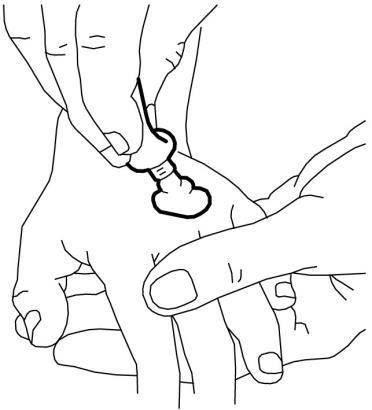
- 2. Remove the paper layer from the middle window of the non-stick side of the dressing (leaving the paper frame).
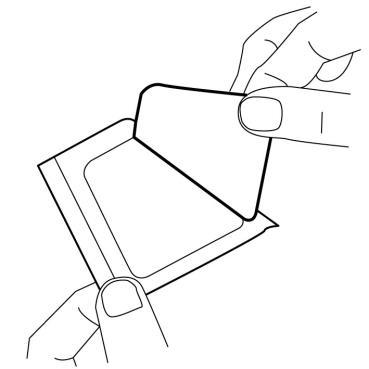
- 3. Remove the top layer of the adhesive dressing.
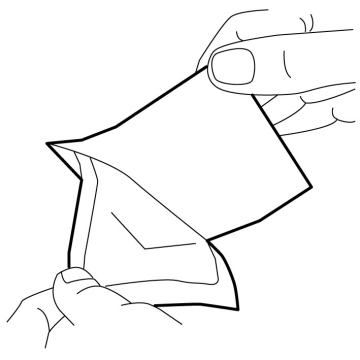
- 4. Carefully place the dressing over the mound of cream. Do not spread the cream under the dressing.
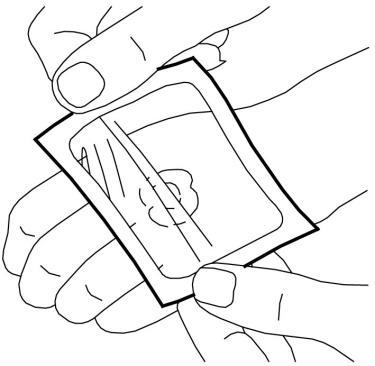
- 5. Remove the paper reinforcement. Gently smooth the edges of the dressing. Then, leave the dressing on for at least 60 minutes if the skin is not damaged. The cream should not be left on for more than 60 minutes in children under 3 months or more than 30 minutes in children with atopic dermatitis. When applying the cream to the genital area or leg ulcers, shorter application times may be used as described below.
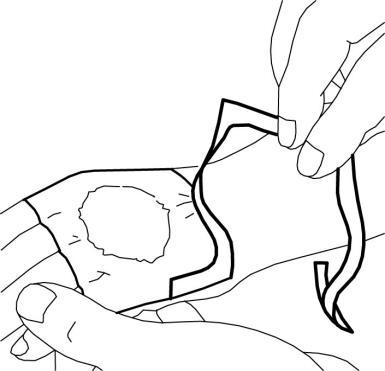
- 6. The doctor or nurse will remove the dressing and wipe off the cream immediately before the medical procedure (e.g., before inserting the needle).
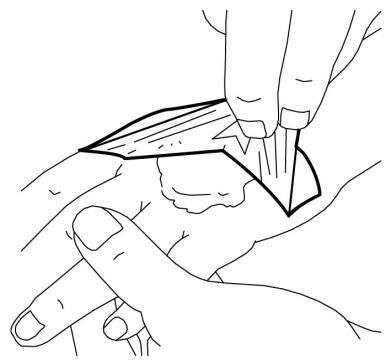
Application to larger areas of freshly shaved skin before procedures in outpatient settings (such as hair removal):
The usual dose of EMLA is 1 g of cream per 10 cm² (10 square centimeters) of skin surface, applied for 1 to 5 hours under a dressing. EMLA should not be applied to an area of freshly shaved skin larger than 600 cm² (600 square centimeters, e.g., 30 cm x 20 cm).
The maximum dose is 60 g.
Application to the skin before procedures in hospital settings (e.g., before skin grafting), which require deeper skin anesthesia:
- EMLA may be used in this way in adults and adolescents over 12 years of age.
- The usual dose is 1.5 g to 2 g of cream per 10 cm² (10 square centimeters) of skin surface.
- The cream is applied and covered with a dressing for 2 to 5 hours.
Application to the skin before removal of warts
- EMLA may be used in children and adolescents with atopic dermatitis.
- The usual dose depends on the child's age and is applied for 30 to 60 minutes (30 minutes in patients with atopic dermatitis). The doctor, nurse, or pharmacist will inform the patient about the amount of cream to be used.
Application to the genital skin before injection of local anesthetics
- EMLA may be used in this way only in adults and adolescents over 12 years of age.
- The usual dose is 1 g of cream (1 g to 2 g in the case of female genital skin) per 10 cm² (10 square centimeters) of skin surface.
- The cream is applied and covered with a dressing. The dressing is left on for 15 minutes in the case of male genital skin and for 60 minutes in the case of female genital skin.
Application to the genital skin before minor surgical procedures on the skin (such as removal of warts)
- EMLA may be used in this way only in adults and adolescents over 12 years of age.
- The usual dose is 5 g to 10 g of cream for 10 minutes. No dressing is used. The procedure should be started immediately after.
Application to leg ulcers before debridement or removal of damaged skin
- The usual dose is 1 g to 2 g of cream per 10 cm² (10 square centimeters) of skin surface and no more than 10 g.
- The cream is applied and covered with a tight dressing, e.g., plastic foil. The cream and dressing are applied 30 to 60 minutes before the debridement procedure. The cream should be removed with a cotton swab and the debridement started immediately.
- EMLA can be used before debridement of leg ulcers up to 15 times over a period of 1-2 months.
- When using the cream on leg ulcers, the EMLA tube should be used as a single-dose product: after each use of the cream in a patient, the tube with the remaining amount of cream should be discarded.
Using more EMLA than recommended
If more EMLA than recommended by the doctor, pharmacist, or nurse is used, they should be contacted immediately, even if the patient does not feel unwell.
Problems and discomfort that may occur after using too much EMLA are listed below. These discomforts should not occur when using EMLA as recommended.
- Feeling of "emptiness" in the head or dizziness.
- Numbness or tingling of the skin around the mouth and tongue.
- Disturbed sense of taste.
- Blurred vision.
- Ringing in the ears.
- There is also a risk of methemoglobinemia (a problem with the level of a pigment in the blood). This is more likely if the patient is taking certain other medicines. In this case, the skin may turn blue-gray due to insufficient oxygen in the blood.
In severe cases of overdose, symptoms such as seizures, low blood pressure, decreased breathing rate, respiratory arrest, and abnormal heart rhythm may occur. These problems can be life-threatening.
If you have any further questions about the use of this medicine, ask your doctor, pharmacist, or nurse.
4. Possible side effects
Like all medicines, EMLA can cause side effects, although not everybody gets them.
If you experience any of the following side effects, or if you notice any not listed in this leaflet, please tell your doctor or pharmacist. You should tell your doctor about any discomfort you experience while using EMLA.
At the site of application of EMLA, a mild reaction may occur (pallor or redness of the skin, slight swelling, initial burning or itching sensation). These are normal reactions to the cream and anesthetics, which disappear after a short time without the need for any medical treatment.
If you experience any worrying or unusual side effects or reactions while using EMLA, you should stop using it and contact your doctor or pharmacist as soon as possible.
Common(may affect up to 1 in 10 people)
- Transient local skin reactions (pallor, redness, swelling) at the site of application during use on the skin, mucous membranes of the genital area, or on leg ulcers.
- Initial mild burning, itching, or warm sensation at the site of application during use on the mucous membranes of the genital area or on leg ulcers.
Uncommon(may affect up to 1 in 100 people)
- Initial mild burning, itching, or warm sensation at the site of application during use on the skin.
- Numbness (tingling) at the site of application during use on the mucous membranes of the genital area.
- Skin irritation at the site of application during use on leg ulcers.
Rare(may affect up to 1 in 1,000 people)
- Allergic reactions, which in rare cases may lead to anaphylactic shock (skin rash, swelling, fever, difficulty breathing, and fainting) during use on the skin, mucous membranes of the genital area, or on leg ulcers.
- Methemoglobinemia (a blood disorder) during use on the skin.
- Minor pinpoint bleeding (petechiae) at the site of application (especially in children with eczema after prolonged use of the cream) during use on the skin.
- Irritation of the eyes if they accidentally come into contact with EMLA during its use on the skin.
Additional side effects in children
Methemoglobinemia, a blood disorder that is more commonly observed in children, often in association with overdose in newborns and infants under 12 months of age.
Reporting side effects
If you experience any side effects, including any not listed in this leaflet, please tell your doctor, pharmacist, or nurse. Side effects can also be reported directly to the Pharmacovigilance Department of the Office for Registration of Medicinal Products, Medical Devices, and Biocidal Products,
Jerozolimskie Avenue 181C,
02-222 Warsaw,
phone: +48 (22) 49 21 301,
fax: +48 (22) 49 21 309,
website: https://smz.ezdrowie.gov.pl.
By reporting side effects, you can help provide more information on the safety of this medicine.
5. How to store EMLA
Keep this medicine out of the sight and reach of children.
Do not use this medicine after the expiry date which is stated on the packaging. The expiry date refers to the last day of the month.
Do not store above 30°C. Do not freeze.
Medicines should not be disposed of via wastewater or household waste. Ask your pharmacist how to dispose of medicines no longer required. These measures will help protect the environment.
6. Contents of the packaging and other information
What EMLA contains
- The active substances are lidocaine and prilocaine. 1 g of cream contains 25 mg of lidocaine and 25 mg of prilocaine.
- The other ingredients are macrogolglycerol hydroxystearate, carbomers, sodium hydroxide, and purified water.
What EMLA looks like and contents of the pack
White, homogeneous cream.
EMLA is packed in an aluminum tube with a protective membrane, internally coated with a protective varnish, with a screw cap and a piercing device, in a cardboard box.
EMLA is available in the following packs:
1 aluminum tube containing 5 g of cream and 2 occlusive dressings.
1 aluminum tube containing 5 g of cream and 3 occlusive dressings.
5 aluminum tubes, each containing 5 g of cream, and 12 occlusive dressings.
For more detailed information, please contact the marketing authorization holder or the parallel importer.
Marketing authorization holder in Portugal, the country of export:
Aspen Pharma Trading Limited, 3016 Lake Drive, Citywest Business Campus, Dublin 24, Ireland
Manufacturer:
Recipharm Karlskoga AB, Björkbornvägen, 5, SE-691 33 Karlskoga, Sweden
Parallel importer:
Delfarma Sp. z o.o., ul. Św. Teresy od Dzieciątka Jezus 111, 91-222 Łódź
Repackaged by:
Delfarma Sp. z o.o., ul. Św. Teresy od Dzieciątka Jezus 111, 91-222 Łódź
Marketing authorization number in Portugal, the country of export: 2443588
Parallel import authorization number: 237/23
This medicinal product is authorized in the Member States of the European Economic Area under the following names:
Austria
Emla 5% - Creme
Belgium
Emla 25mg/25mg crème
Cyprus
Emla Cream 5%
Finland
EMLA
France
EMLA 5 POUR CENT, crème
Greece
EMLA
Iceland
Emla
Ireland
EMLA 5% w/w Cream
Italy
EMLA
Luxembourg
Emla 25mg/2 mg crème
Malta
EMLA 5% w/w Cream
Norway
Emla
Poland
EMLA
Spain
EMLA 25 mg/g + 25 mg/g crema
Sweden
EMLA
Netherlands
Emla
Date of approval of the leaflet: 19.10.2023
[Information about the trademark]
- Country of registration
- Active substance
- Prescription requiredYes
- Marketing authorisation holder (MAH)Aspen Pharma Trading Limited
- This information is for reference only and does not constitute medical advice. Always consult a licensed doctor before taking any medication. Oladoctor is not responsible for medical decisions based on this content.
- Alternatives to EmlaDosage form: Plaster, 25 mg + 25 mgActive substance: combinationsPrescription not requiredDosage form: Plaster, 25 mg + 25 mgActive substance: combinationsPrescription not requiredDosage form: Plaster, 25 mg + 25 mgActive substance: combinationsPrescription not required
Alternatives to Emla in other countries
The best alternatives with the same active ingredient and therapeutic effect.
Alternative to Emla in Spain
Alternative to Emla in Ukraine
Online doctors for Emla
Discuss dosage, side effects, interactions, contraindications, and prescription renewal for Emla – subject to medical assessment and local rules.



